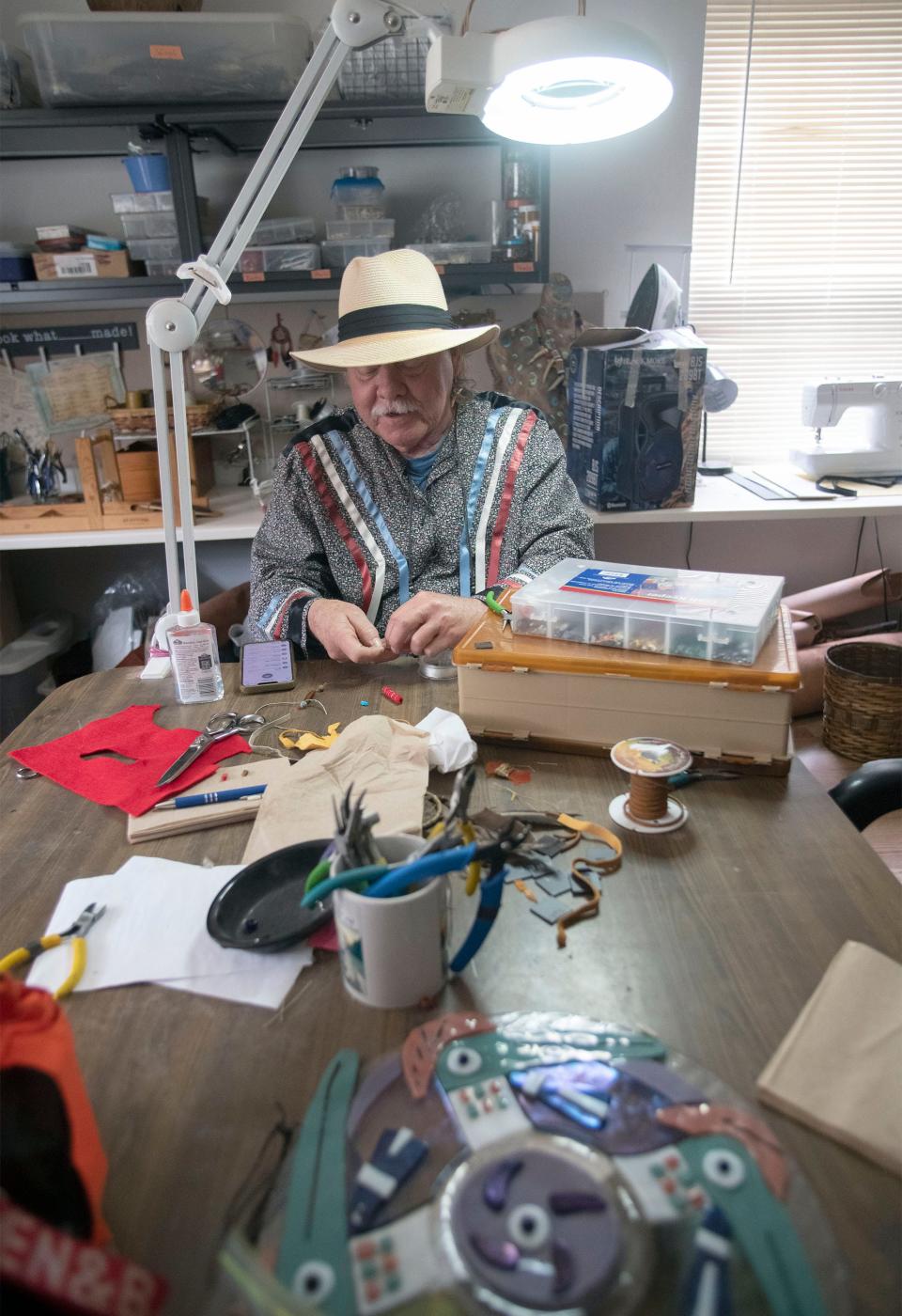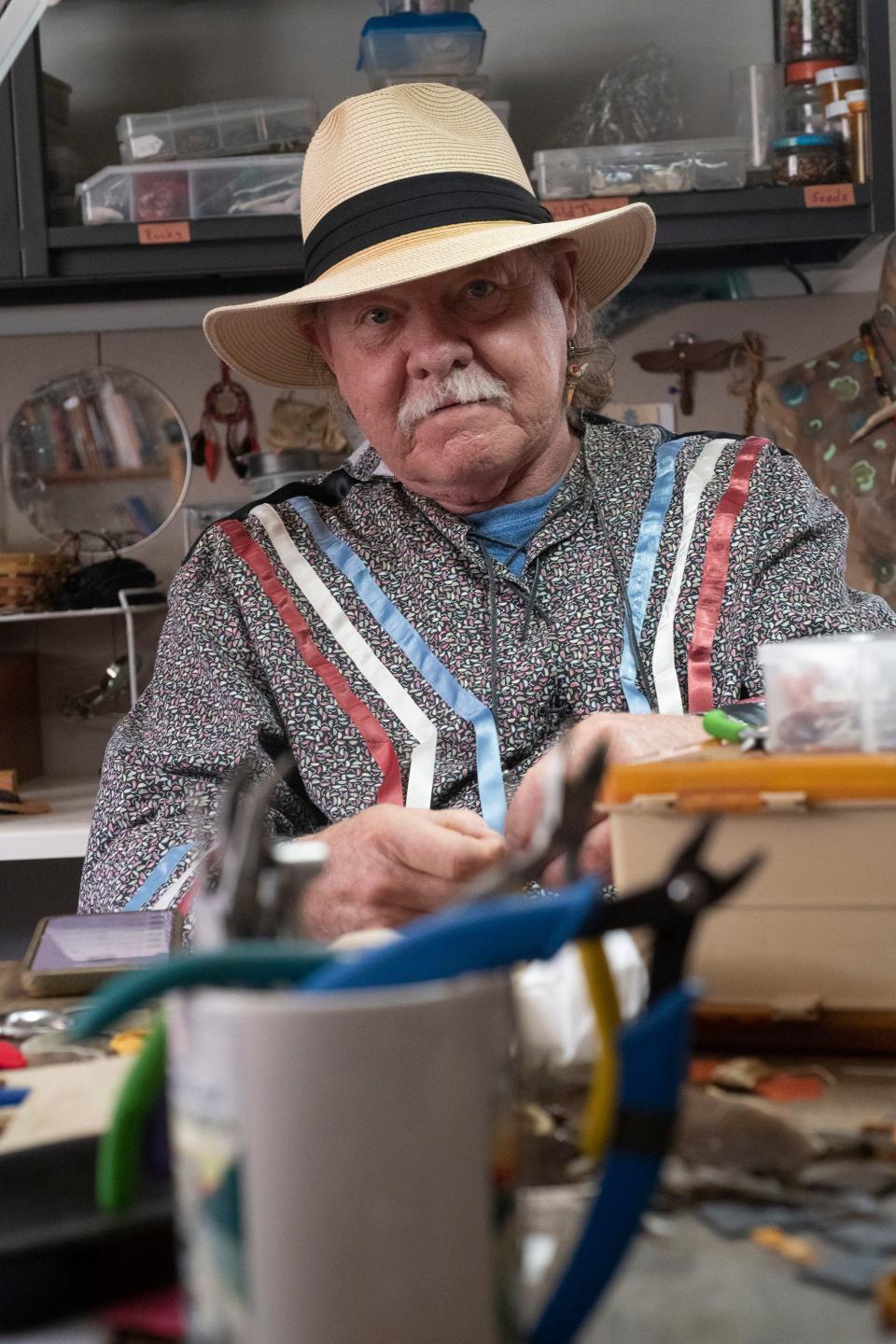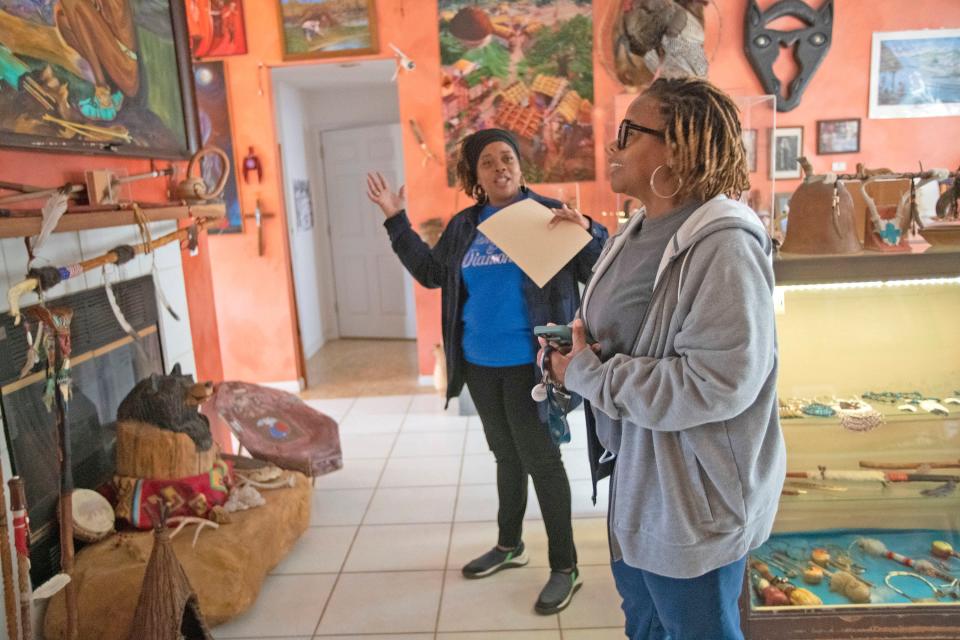When the language dies, the people die: Perdido Bay Tribe strives to preserve its history
Chief Ghost Dancer never owned a pair of shoes until he joined the military.
Growing up in South Florida, the tiger grass would slice his ankles as he soaked in his parents' and grandparents' stories of their Indigenous people.
His background has made him an activist for Indigenous rights, a preservationist of his culture and history and now a chief of the Perdido Bay Tribe and the director of the Native Paths Cultural Heritage Resource Center and Museum.
“When you lose your language, you lose a part of yourself. When you lose the songs, you lose your history, you lose the ceremonies, then you lose your connection to everything,” Ghost Dancer said. “Our blood, to us — and clan relations to all life and to everything that exists — is what's so important to our culture. That we never forget who we are, where we came from. That's the only way we know where we're going in the future.”

Related:Cultural survival on the run: Pensacola's history shaped by Native Americans
You may like:How indigenous laborers from Mexico built and rebuilt Pensacola
The Native Paths Cultural Heritage Resource Center and Museum is a key resource for preserving and sharing that history and culture.
The center, located on 3300 Beloved Path in West Pensacola, sits on a 4 ½ acre state with a greenhouse, pond, a boardwalk in the back and an array of hawks, eagles, raccoons and other wildlife roaming the vast land around it.
The need for Native Paths stems from the passing of the Indian Removal Act of 1830, which authorized the president to grant Indigenous people lands west of the Mississippi river in exchange for their lands within existing state borders in the east. The act forcefully removed more than 46,000 Indigenous people over the next decade, an exodus now known as the Trail of Tears, and opened up over 25 million acres of eastern land to white settlement.
"They wanted to take everything from us and wipe away our history," Ghost Dancer said. "Wipe away our contributions in medicine, science, mathematics, inventions and everything. They did not want people to remember who they took the land from."
There was active resistance as many Indigenous people east of the Mississippi stayed but many of those who did were forced to assimilate to American culture or hide their heritage out right.
Native Paths sets to reclaim and preserve the language and heritage that was lost or taken away through government occupation.

The center was the vision of Bobby Thomas “Bearheart” Johns who was born in Georgia and moved to Pensacola in 1979. He was a devoted student of the Muscogee Creek Indian culture as he learned the oral traditions, history, arts and crafts.
He, alongside Creek Indian friends, established the Perdido Bay Tribe of Southeastern Lower Muscogee Creek Indians Inc. in 1990 to help preserve Muscogee Creek Indian heritage.
Chief Bearheart became an artist-in-residence of all Escambia County middle and high schools in 1991. In 1993, he became the first Creek to be honored with the Florida Folk Life Heritage Award.
In January 2001, Bearheart opened the Native Paths Cultural Heritage Resource Center, located at the time on 400 S. Alcaniz St., with plans to have vocational training for disabled Indigenous people in Escambia and Santa Rosa and to create a “safe, creative, educational atmosphere" with a focus on "responsibility, caring and honor of history and culture."
It would and still does include Indigenous art, folk arts and crafts, music, artifacts, historical information and literature.
In October 2007, the Escambia County Board of County Commissioners provided the current land for the Native Paths Cultural Heritage Resource Center and Museum.
Bearheart passed away in 2013 and Chief Ghost Dancer took over as the executive director of the center and the tribe last October.
Currently, the center does a lot of work for the community helping disabled Indigenous veterans and working with the Wildlife Sanctuary of Northwest Florida and the University of West Florida to preserve wildlife and endangered plants.
Nicole Grinnan, an archaeologist for the University of West Florida's Florida Public Archaeology Network program, said the center is important since it is one of the few local organizations that engages people with a primary goal of providing education and breaking down misconceptions of Indigenous history and heritage.
“It's important that places like the cultural center exist, because they help celebrate that diversity and they help add dialogue to that broader conversation about human history and its meaning,” Grinnan said. “I think for many people, they draw their sense of identity or their sense of self from heritage, and being aware of what's out there is really important. It can mean a lot to people, even people who may not be specifically connected with that tribe. It's a part of our greater local history, and we're all a part of that history.”

Grinnan and FPAN have helped the center with analyzing the large collection of artifacts that have been donated to the center. They have also helped with bringing attention to the Old Muscogee cemetery, a burial site for African American and Muscogee people that fell into neglect.
The preservation of the history, culture, and language of the Muscogee Creek Indian tribe is vital for Ghost Dancer and others who want to make sure the next generation are able to learn and be proud of their identity.
Chief Thomas Nichols, who lives in Santa Rosa and is part of the Creek Indian Tribe, helps out at Native Paths. He said Native Paths plays an important role in educating others on who they are and introducing their culture to the community.
“An elder chief told me one time that (when) ‘the language dies, the people die,’” Nichols said. “That's when I started trying to get the language back.”
This article originally appeared on Pensacola News Journal: Native Paths center carries history of Pensacola's Indigenous people

